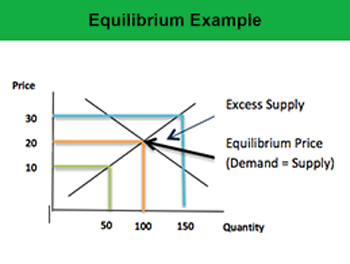Mother of Simplified AccountingDebits increase the balance of dividends, expenses, assets and losses. Credits increase the balance of gains, income, revenues, liabilities, and shareholder equity. The simplest most effective way to understand Debits and Credits is by actually recording them as positive and negative numbers directly on the balance sheet.Credits are money coming into the account; they increase the balance of gains, income, revenues, liabilities, and shareholder equity. The process of using debits and credits creates a ledger format that resembles the letter “T”. The term “T-account” is accounting jargon for a “ledger account” and is often used when discussing bookkeeping. The reason that a ledger account is often referred to as a T-account is due to the way the account is physically drawn on paper (representing a “T”). The left column of the “T” is for Debit (Dr) transactions, while the right column is for Credit (Cr) transactions.
Real Accounts
Each transaction that takes place within the business will consist of at least one debit to a specific account and at least one credit to another specific account. A debit to one account can be balanced by more than one credit to other accounts, and vice versa. For all transactions, the total debits must be equal to the total credits and therefore balance. AssetDebits (Dr)Credits (Cr)XThe “X” in the debit column denotes the increasing effect of a transaction on the asset account balance (total debits less total credits), because a debit to an asset account is an increase. The asset account above has been added to by a debit value X, i.e. the balance has increased by £X or $X.At the end of any financial period (say at the end of the quarter or the year), the net debit or credit amount is referred to as the accounts balance. If the sum of the debit side is greater than the sum of the credit side, then the account has a “debit balance”. If the sum of the credit side is greater, then the account has a “credit balance”.These daybooks are not part of the double-entry bookkeeping system. The information recorded in these daybooks is then transferred to the general ledgers. Usually only the sum of the book transactions (a batch total) for the day is entered in the general ledger.
Debits and credits
Alternately, they can be listed in one column, indicating debits with the suffix “Dr” or writing them plain, and indicating credits with the suffix “Cr” or a minus sign. Despite the use of a minus sign, debits and credits do not correspond directly to positive and negative numbers. When the total of debits in an account exceeds the total of credits, the account is said to have a net debit balance equal to the difference; when the opposite is true, it has a net credit balance. For a particular account, one of these will be the normal balance type and will be reported as a positive number, while a negative balance will indicate an abnormal situation, as when a bank account is overdrawn.

Conversely, a decrease to any of those accounts is a credit or right side entry. On the other hand, increases in revenue, liability or equity accounts are credits or right side entries, and decreases are left side entries or debits. When the client pays the invoice, the accountant credits accounts receivables and debits cash. Double-entry accounting is also called balancing the books, as all of the accounting entries are balanced against each other. If the entries aren’t balanced, the accountant knows there must be a mistake somewhere in the general ledger.When you add Assets, Liabilities and Equity together (using positive numbers to represent Debits and negative numbers to represent Credits) the sum should be Zero. This use of the terms can be counter-intuitive to people unfamiliar with bookkeeping concepts, who may always think of a credit as an increase and a debit as a decrease.
accounting
The next step would be to balance that transaction with the opposite sign so that your balance sheet adds to zero. The way of doing these placements are simply a matter of understanding where the money came from and where it goes in the specific account types (like Liability and net assets account). So if $100 Cash came in and you Debited/Positive next to the Cash Account, then the next step is to determine where the -$100 is classified.
What is accountancy in simple words?
It is a systematic process of identifying, recording, measuring, classifying, verifying, summarizing, interpreting and communicating financial information. It reveals profit or loss for a given period, and the value and nature of a firm’s assets, liabilities and owners’ equity.
- Keep in mind that most business accounting software keeps the chart of accounts flowing the background and you usually look at the main ledger.
- Debits increase the balance of dividends, expenses, assets and losses.
- Because these two are being used at the same time, it is important to understand where each goes in the ledger.
Personal Accounts
Before the advent of computerised accounting, manual accounting procedure used a book (known as a ledger) for each T-account. The chart of accounts is the table of contents of the general ledger. Totaling of all debits and credits in the general ledger at the end of a financial period is known as trial balance.
What accountancy means?
Accountancy is the practice of recording, classifying, and reporting on business transactions for a business. It provides feedback to management regarding the financial results and status of an organization. The key accountancy tasks are noted below.Accounts with a net Debit balance are generally shown as Assets, while accounts with a net Credit balance are generally shown as Liabilities. The equity section and retained earnings account, basically reference your profit or loss. Therefore, that account can be positive or negative (depending on if you made money).Debit balances are normal for asset and expense accounts, and credit balances are normal for liability, equity and revenue accounts. Whenever an accounting transaction is created, at least two accounts are always impacted, with a debit entry being recorded against one account and a credit entry being recorded against the other account. There is no upper limit to the number of accounts involved in a transaction – but the minimum is no less than two accounts. Thus, the use of debits and credits in a two-column transaction recording format is the most essential of all controls over accounting accuracy. Debits are money going out of the account; they increase the balance of dividends, expenses, assets and losses.

Likewise, in the liability account below, the X in the credit column denotes the increasing effect on the liability account balance (total credits less total debits), because a credit to a liability account is an increase. “Day Books” or journals are used to list every single transaction that took place during the day, and the list is totalled at the end of the day.Because these two are being used at the same time, it is important to understand where each goes in the ledger. Keep in mind that most business accounting software keeps the chart of accounts flowing the background and you usually look at the main ledger.
Accounting
If you got it as a loan then the -$100 would be recorded next to the Loan Account. If you received the $100 because you sold something then the $-100 would be recorded next to the Retained Earnings Account. If everything is viewed in terms of the balance sheet, at a very high level, then picking the accounts to make your balance sheet add to zero is the picture. The complete accounting equation based on modern approach is very easy to remember if you focus on Assets, Expenses, Costs, Dividends (highlighted in chart). All those account types increase with debits or left side entries.
What are the subjects in accountancy?
If you receive $100 cash, put $100 (debit/Positive) next to the Cash account. If you spend $100 cash, put -$100 (credit/Negative) next to the cash account.
Popular ‘Accounting & Auditing’ Terms
A depositor’s bank account is actually a Liability to the bank, because the bank legally owes the money to the depositor. Thus, when the customer makes a deposit, the bank credits the account (increases the bank’s liability). At the same time, the bank adds the money to its own cash holdings account. But the customer typically does not see this side of the transaction. Debits and credits are traditionally distinguished by writing the transfer amounts in separate columns of an account book.
